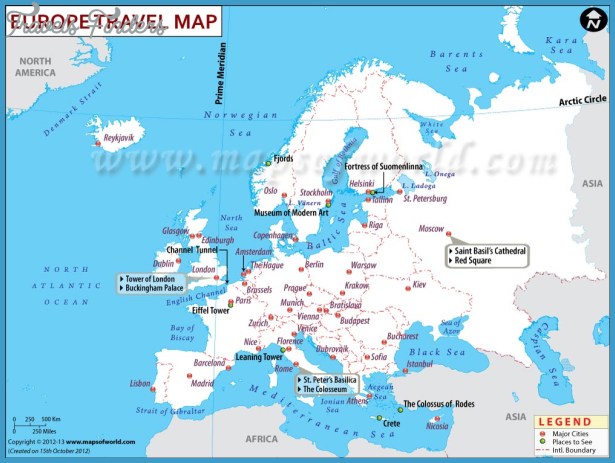European weather varies widely depending upon latitude, altitude, and the presence of large bodies of water. Of particular importance to Western Europe is the Atlantic Drift (the diffusion of the Gulf Stream) that moderates the climate and is responsible for much of Europe’s rain.
The Gulf Stream affects Iceland’s climate greatly. Reykjavik, the capital and home to most of the country’s people, never gets very warm but seldom drops below freezing even in winter. The same is true of Ireland and Scotland. Greece, on the other hand, experiences temperatures of ninety-five degrees in July and August. Because of its altitude, Switzerland has a pleasant average July and August temperature of about seventy degrees. Stockholm, much farther north, gets warmer in the summer and colder in the winter but its climate is not severe because it is a city of connected islands. Madrid has pleasant summer temperature because it sits on a two-thousand-foot plateau surrounded by mountains. Moscow experiences the widest range of temperatures of the European capitals, bitingly cold in winter, fairly warm in summer. The Mediterranean is subtropical; the northern part of Norway is the Arctic. Also accounting for these climate differences are distances involved between Northern and Southern Europe.
The Mediterranean is Europe’s Caribbean, ringed by vacation spots and dotted with islands that elicit the Ulysses in millions, be they butcher, baker, or candlestick maker.
Until seventy million years ago the Mediterranean was open to the Atlantic. Then the rocks of Africa and Iberia closed in and the Mediterranean basin became a desert. The natural dam later broke and the Atlantic rushed in. Today deep waters from the Mediterranean flow out into the Atlantic through the eight-mile gap between Gibralter and Morocco. (King Hussein of Morocco would have a bridge span the Straits of Gibralter, making it easy for millions of Europeans to visit his country.) Indeed a bridge does join Asia and Europe, spanning the Bosphorus, the passage between the Mediterranean and the Black Sea.
Europeans travel widely. The largest number, about 5.5 million, or 42.5 percent, come to the Americas. Another 3.37 million, or 26.1 percent, go to Africa. East Asia and the Pacific attract 2.48 million (19.2 percent) of the total. South Asia and the Middle East each attract seventy-nine million or together 12.2 percent of the total.1
About three-quarters of all international border crossings take place within Europe; only 15 percent take place within North America. Interregional travel is something else. The United States accounts for a substantial portion of the total. Over half of U.S. travelers abroad head for Western Europe.
















